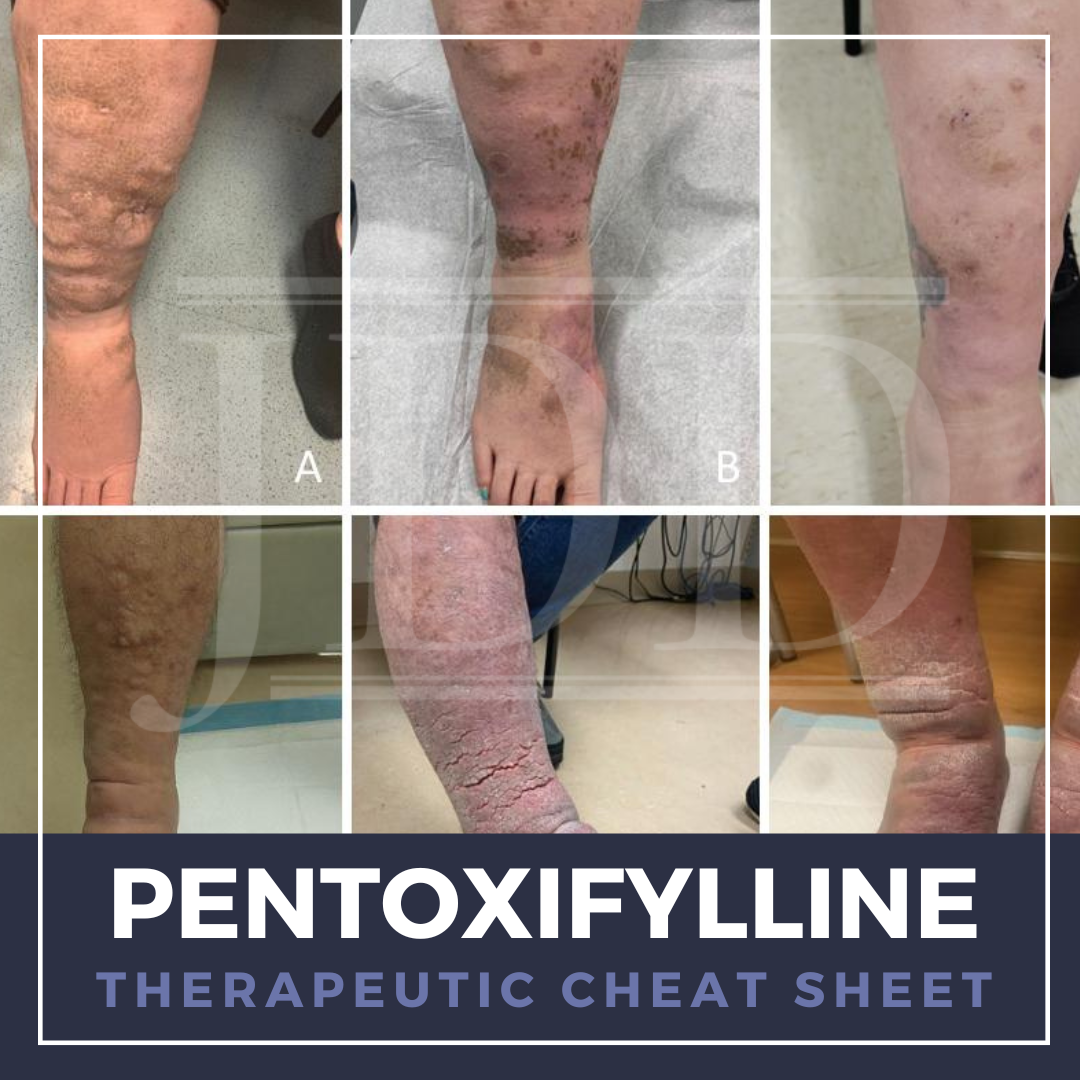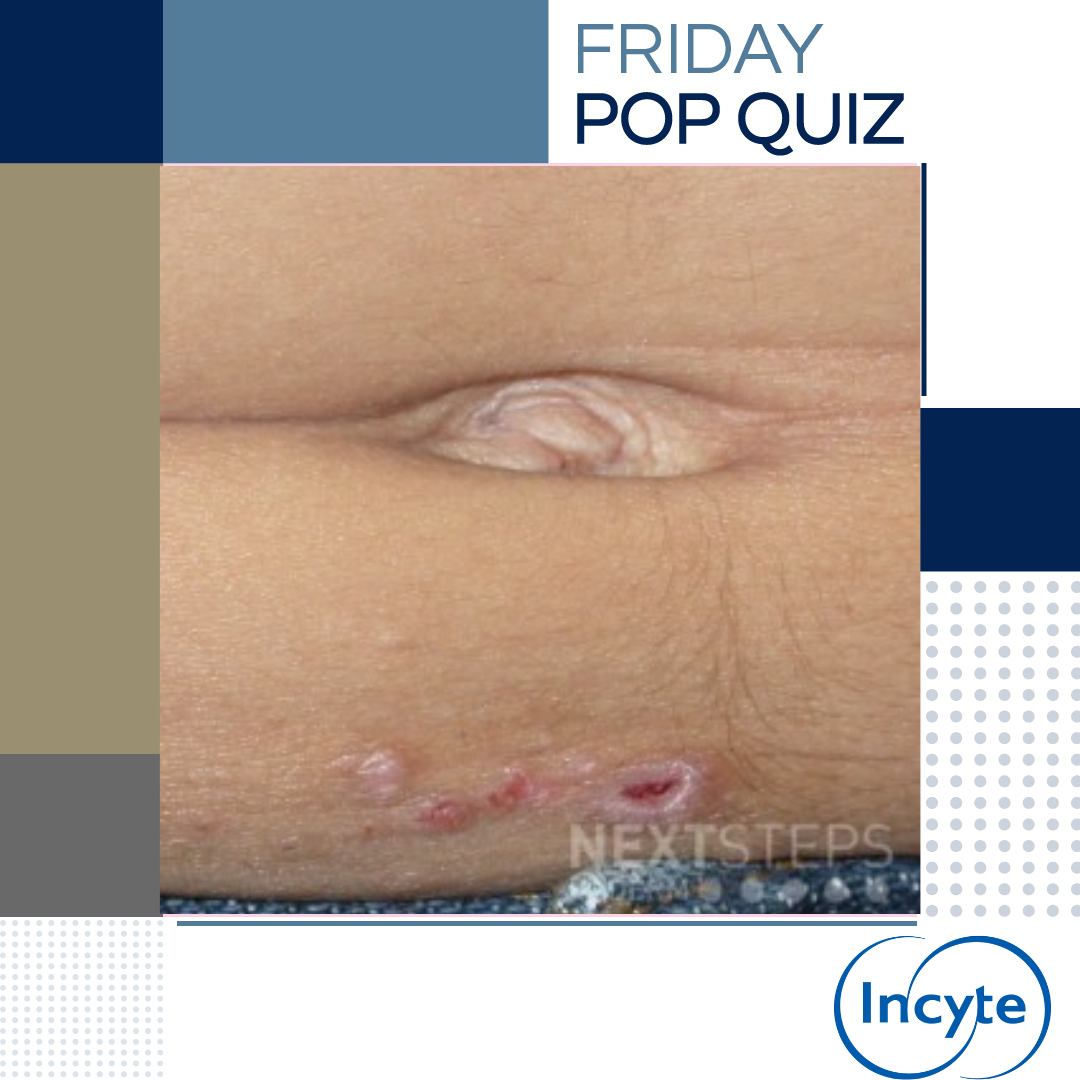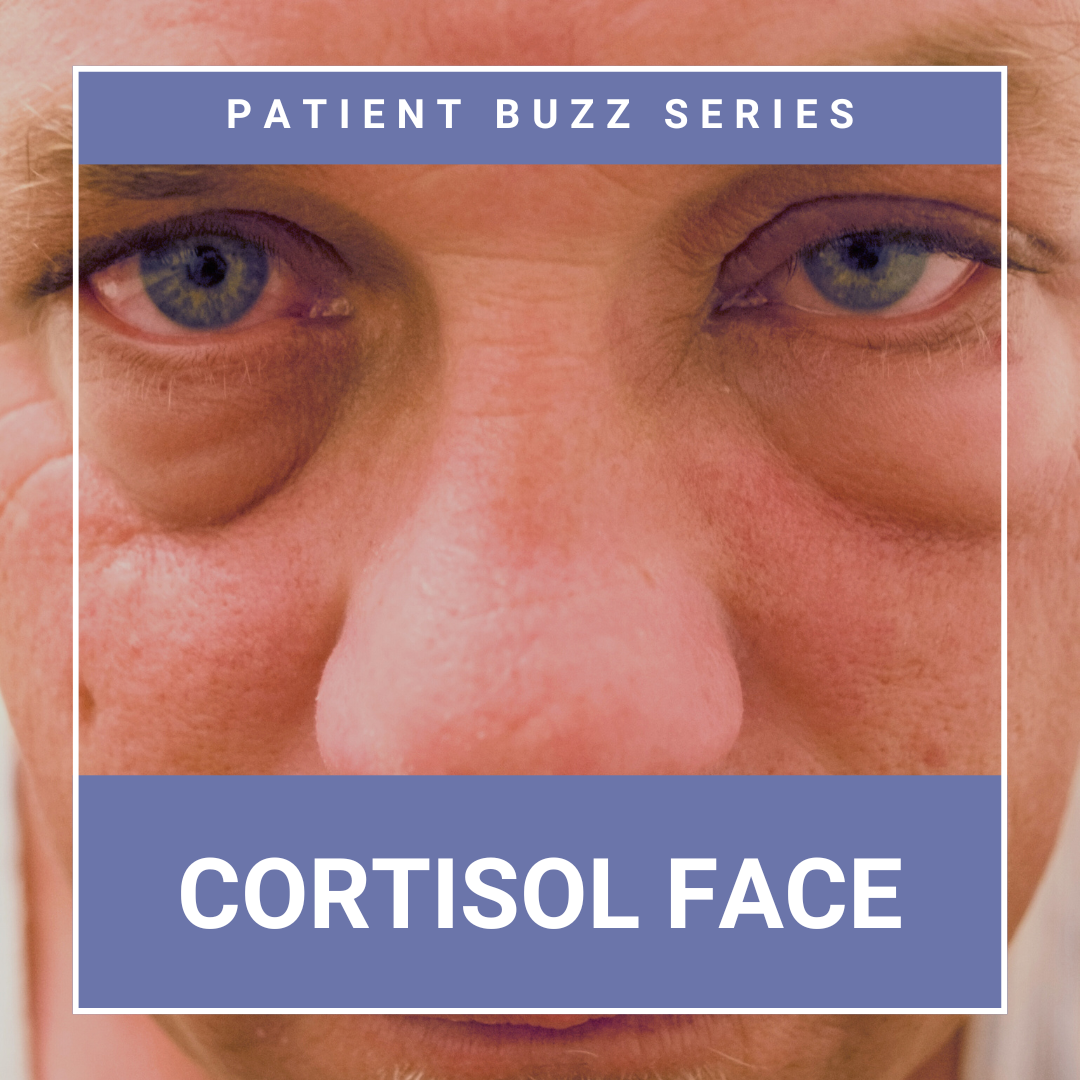Friday Pop Quiz #293
The correct answer is B. HLA-Cw6.
The case describes early-onset plaque psoriasis with a postive family history. HLA-Cw6 is associated with early onset (<40) psoriasis with positive family history, expressed in 90% of early onset patients and only 50% in late onset (7% in control population). The characteristics of Type I psoriasis are: early-onset, positive family history, HLA-Cw6. Ty …

 Pentoxifylline is a methyl-xanthine derivative traditionally used to treat symptoms of peripheral vascular disease and has emerged as a valuable therapeutic agent in dermatology for its anti-inflammatory and immunomodulatory properties. We continue our series, Therapeutic Cheat Sheet, with a closer look at pentoxifylline, which is FDA-approved for the treatment of intermittent claudication and is …
Pentoxifylline is a methyl-xanthine derivative traditionally used to treat symptoms of peripheral vascular disease and has emerged as a valuable therapeutic agent in dermatology for its anti-inflammatory and immunomodulatory properties. We continue our series, Therapeutic Cheat Sheet, with a closer look at pentoxifylline, which is FDA-approved for the treatment of intermittent claudication and is …  What is the most likely diagnosis?
A. Psoriasis
B. Pityriasis rosea
C. Cutaneous T-cell lymphoma
D. Contact dermatitis
E. Lichen planus
To find out the correct answer and read the explanation, click here.
Brought to you by our brand partner
…
What is the most likely diagnosis?
A. Psoriasis
B. Pityriasis rosea
C. Cutaneous T-cell lymphoma
D. Contact dermatitis
E. Lichen planus
To find out the correct answer and read the explanation, click here.
Brought to you by our brand partner
…  There’s a new moniker for facial puffiness: “cortisol face.” As described in an article in Parade, cortisol face is a catch-all term for facial swelling due to elevated cortisol levels. The term became popular on TikTok to describe facial puffiness, roundness, and redness or flushing. Physicians quoted in the article pointed out the benefits of cortisol and recommended people talk to their d …
There’s a new moniker for facial puffiness: “cortisol face.” As described in an article in Parade, cortisol face is a catch-all term for facial swelling due to elevated cortisol levels. The term became popular on TikTok to describe facial puffiness, roundness, and redness or flushing. Physicians quoted in the article pointed out the benefits of cortisol and recommended people talk to their d …